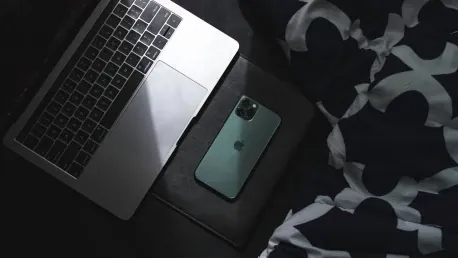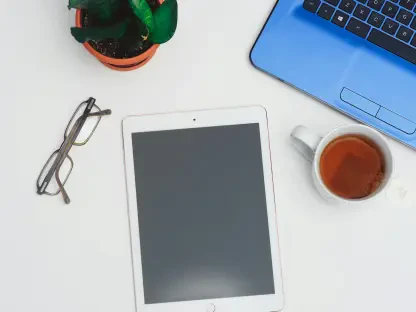In the ever-evolving landscape of technology, Apple’s focus on creating a unified ecosystem has always set it apart from competitors. One of the latest features championing this vision is iPhone Mirroring, which allows users to project their iPhone screens onto their Mac desktops, offering complete control over the mobile device from a computer. The ability to leverage both the iPhone and Mac’s capabilities seamlessly enhances user experience by facilitating tasks on a larger screen and a full-size keyboard. As users increasingly demand seamless integration across their devices, iPhone Mirroring comes as a significant step forward. This feature not only mirrors content but also enables interaction with mobile-only applications directly from a Mac, making it a practical tool for daily use.
User Efficiency and Integration
iPhone Mirroring stands out as a remarkable tool for enhancing user efficiency within the Apple ecosystem. Imagine being able to answer a message or interact with apps exclusive to iOS, all without needing to physically pick up your iPhone. This integration allows users to stay focused on their tasks on the Mac without the constant need to shift between devices. The larger screen provides better visibility and usability, while the full-size keyboard makes typing more efficient, especially for longer texts or emails. This, in turn, can significantly boost productivity, making everyday tasks more manageable and streamlined. Moreover, the feature extends to various applications, meaning that users can enjoy an uninterrupted workflow, whether they’re engaging in professional work, educational endeavors, or personal projects.
However, the benefits of iPhone Mirroring are not just limited to its immediate functionality. This feature embodies Apple’s broader vision of creating a coherent and integrated user experience across all its devices. It leverages the strengths of individual hardware to create a cohesive environment where the boundary between different devices blurs. This interconnected approach can redefine how users interact with their technology, creating new possibilities for multitasking and productivity. Apple’s commitment to enhancing continuity ensures that every interaction with the ecosystem feels natural and intuitive, maintaining the brand’s reputation for innovation and user-centric design. Yet, as promising as iPhone Mirroring is, there are still areas in need of refinement to fully meet its potential.
Addressing the Time-Out Feature
As with any technological innovation, iPhone Mirroring is not without its flaws, and one of the most significant issues users face is the aggressive time-out feature. This feature, designed to disconnect the mirroring session after a few minutes of inactivity, aims to conserve resources but can disrupt the user experience. Users often find themselves needing to re-establish the connection frequently, which can be particularly frustrating during periods of intermittent use. This interruption not only breaks the flow of work but also diminishes the overall efficiency that iPhone Mirroring promises. To address this, Apple could introduce a customizable time-out period. Allowing users to adjust or disable this feature based on their preferences would make the tool far more user-friendly.
Additionally, for those engaged in tasks that require focus and the sporadic use of their mobile device, this current limitation can be particularly problematic. The need for uninterrupted access without constantly re-engaging with the connection setup is crucial for maintaining workflow continuity. An adjustable or optional time-out feature would cater to a broader range of user habits and requirements, ensuring that the mirroring feature serves its purpose without unnecessary interruptions. Such customization would be a straightforward enhancement from a development perspective and could significantly improve user satisfaction and productivity. As the feature stands, its rigidity contrasts with the otherwise flexible and user-centric design ethos that Apple strives to uphold across its ecosystem.
Managing Duplicate Notifications
Another notable challenge encountered with iPhone Mirroring is the issue of duplicate notifications. When mirroring an iPhone screen to a Mac, users are often bombarded with notifications from both devices, leading to redundancy and potential distraction. This can be especially bothersome in professional or high-concentration settings where minimizing interruptions is paramount. While there is a workaround available through the System Settings to manage these notifications manually, the process is neither intuitive nor efficient. Users must navigate multiple settings to sync their notifications across devices, adding an extra layer of complexity. Ideally, iPhone Mirroring should come with an automatic management system that detects and eliminates duplicate notifications seamlessly, without requiring user intervention.
The presence of duplicate notifications highlights a broader inconsistency within the integration of the Apple ecosystem. Although strides have been made towards a unified user experience, the task of managing these notifications underscores the need for more cohesive inter-device communication. By automatically synchronizing notification settings between the iPhone and Mac when mirroring is activated, Apple could eliminate the manual adjustment requirement. This would streamline the user experience and reduce unnecessary distractions, allowing users to focus solely on their tasks. Efforts to manage notifications more effectively would align with the overall goal of making the technology more intuitive and seamless, reflecting Apple’s core principles of simplicity and usability. Enhancing this aspect of iPhone Mirroring could push its utility from merely practical to an indispensable productivity tool.
Enhancing Biometric Authentication
Finally, the limitation concerning biometric authentication presents another area ripe for improvement within iPhone Mirroring. As it stands, the feature does not support the use of Face ID for app authentication, which restricts access to certain applications, particularly those requiring high-security measures like banking apps. This restriction can be a significant inconvenience for users who rely on biometric authentication for secure and quick access to their accounts and sensitive information. Integrating Touch ID from the Mac as a solution for authentication while using iPhone Mirroring could provide a more seamless and secure user experience. This enhancement would ensure that users can access all their apps and services without compromising security or convenience.
Addressing this limitation head-on could enhance the reliability and attractiveness of iPhone Mirroring, making it a more well-rounded feature. The incorporation of Touch ID for authentication integrates the Mac’s biometric capabilities with the iPhone, reflecting the interconnected efficiency Apple seeks to promote. By bridging this gap, Apple can demonstrate its commitment to providing a secure and coherent user experience, further solidifying the functionality of iPhone Mirroring. Moving forward, prioritizing such updates could reinforce Apple’s position at the forefront of technological innovation, emphasizing user convenience and security. Providing a seamless transition between devices without needing to adjust personal security practices fundamentally aligns with Apple’s ethos of an intuitive and user-friendly ecosystem.
Future Considerations
Like any technological innovation, iPhone Mirroring has its flaws, with one major issue being its aggressive time-out feature. This functionality, created to disconnect mirroring sessions after a few minutes of inactivity to save resources, often disrupts the user experience. Users frequently have to reconnect, which is particularly aggravating during sporadic use. This constant interruption disrupts workflow and reduces the efficiency that iPhone Mirroring aims to provide. Apple could address this issue by introducing a customizable time-out period. Allowing users to adjust or disable this feature according to their needs would make the tool significantly more user-friendly.
For tasks requiring focus and periodic mobile device use, this limitation is especially troublesome. The necessity for continuous access without repeatedly re-establishing the connection is vital for maintaining workflow. An adjustable or optional time-out setting would accommodate a wider range of user habits, ensuring the mirroring feature works without unnecessary breaks. This modification would be a simple development change and could greatly enhance user satisfaction and productivity. As it stands, the feature’s rigidity contrasts with Apple’s usually flexible, user-centric design across its products.









